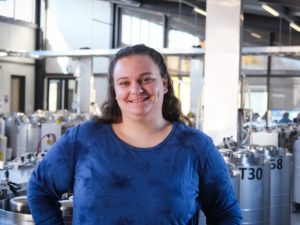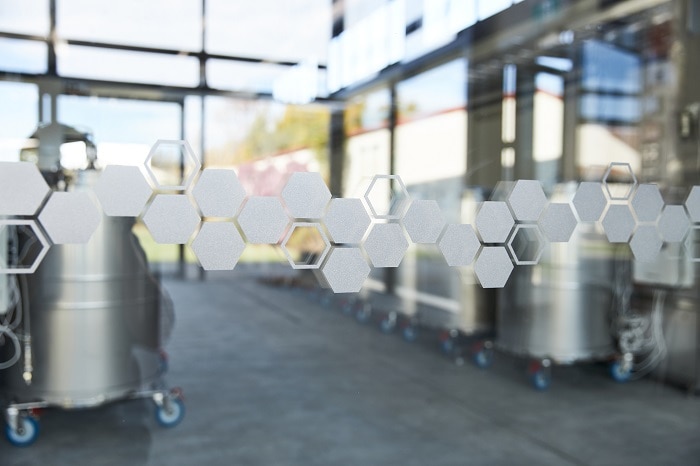
Sarah Manners
PhD student Sarah Manners has made it her mission to better understand the world of volatile sulphur compounds in winemaking. Sarah works out of the Biomolecular Interaction Centre at Canterbury University and is working with Bragato Research Institute to use sulphur bacteria and their enzymes to improve testing. Sarah shares some insights into her research in this Q&A.
How did you become interested in wine science?
I’ve always had a love of food and drink personally. I love to cook and had always wanted to incorporate some sort of food science into my research. My research journey has included a wide range of passions, from chemistry to biochemistry and microbiology. Therefore, something that involved a little bit of everything, such as working in the wine chemistry sector, seemed like a perfect fit. I love the way all the aspects of wine chemistry fit into my research and how much there still is to learn.
What role do sulphur compounds play in wine?
Sulphur compounds attribute a characteristic fingerprint to wine aroma in both good ways and bad. Volatile sulphur compounds are compounds with a high boiling point and include well-known winemaking compounds such as hydrogen sulphide, which has that distinct rotten egg aroma. These volatile compounds all have unique aromatic properties. Unfavourable aromas range from cabbage to rotten egg to burnt rubber, while favourable aromas can include struck match flinty aromas or complex tropical aromas. Sulphur compounds are complex in the way they affect wine, with concentration and synergistic effects between compounds playing a significant role as to whether a favourable or unfavourable aroma is produced in the finished wine.
Explain your work with BRI.
My work looks to increase accessibility to high quality testing of sulphur compounds in the wine industry. With my diverse research background, I hope to leverage the unique geothermal atmosphere we have in Aotearoa, to improve testing using sulphur enzymes from unique microbial species found in our most extreme environments. These ‘extremophiles’ are species that love hot temperatures, little oxygen, and vast amounts of unique trace elements, such as sulphur. By combining these two worlds, I look to improve understanding of the sulphur cycle, what these enzymes can do, and how we can use them in the winemaking process.
How will it help the New Zealand wine industry?
The New Zealand wine industry relies heavily on conventional methods for testing sulphur content, such as copper/cadmium tests or just smelling for the characteristic aroma of hydrogen sulphide during fermentation. This limits the level of detection and therefore limits understanding as to how these compounds contribute to wine quality. By improving understanding, testing and developing potential remediation strategies, we can improve overall wine quality and consistency between ferments. This will not only help the New Zealand wine industry produce better products but will also turn volatile sulphur compounds into an advantage by producing better tasting, more complex and unique wines.
How will you develop the testing method?
As I mentioned, we are in the early stages of research with the project, so the testing method we develop will largely depend on what we are able to leverage from Aotearoa’s geothermal systems. Regardless, we aim to develop an accessible, cheap, enzyme-based assay to reduce current testing detection limits for volatile sulphur compounds. Alongside this, my fellow PhD student Daniel Mak is doing awesome work with Winealyse and Lab-on-a-Chip technology, and there is potential there for future collaboration, developing enzyme based microfluidic assays, specific to volatile sulphur compounds. We are excited to see where Daniel’s work goes, and for the future of this research generally.
Who has helped you in your work?
We have an excellent team, with supervisors Associate Professor Matthew Stott and Professor Renwick Dobson from the University of Canterbury, alongside Tanya Rutan from BRI, and Manpreet Dhami from Manaaki Whenua – Landcare Research. This work is supported by the University of Canterbury’s Aho Hīnātore Accelerator Scholarship, with collaboration from the Food Transitions 2050 Joint Postgraduate School.
This article was first published in issue 137 of New Zealand Winegrower magazine and is republished with permission.

















